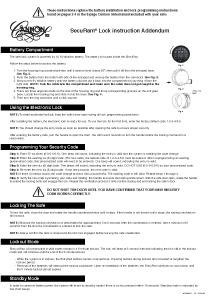aftermarket wheel guide
Choosing the Right Aftermarket Wheels
Selecting aftermarket wheels transforms your vehicle’s look and performance. Consider size, material, style, and budget. Research reputable brands and ensure proper fitment for optimal results and safety.
Understanding Wheel Anatomy and Terminology
Before diving into the world of aftermarket wheels, understanding key terminology is crucial. The wheel’s diameter is the overall size, measured in inches. Wheel width, also in inches, refers to the distance across the rim’s mounting surface. Offset dictates the wheel’s mounting position relative to its centerline; positive offset positions the mounting surface closer to the vehicle’s hub, while negative offset moves it outward. Bolt pattern specifies the number and arrangement of lug holes. Center bore is the hole in the center of the wheel, which fits over the vehicle’s hub. Understanding these aspects ensures compatibility and safe installation. The terms “rim” and “wheel” are often used interchangeably; however, the rim is specifically the outer edge of the wheel, where the tire mounts. Additional terms like backspacing (distance from the mounting surface to the wheel’s back) and hub-centric (wheel centered on the hub) further refine the understanding of wheel fitment. Accurate measurements are critical for a proper fit, preventing issues like rubbing against suspension components or misalignment.
Wheel Materials⁚ Forged, Aluminum, and Others
Aftermarket wheels utilize various materials, each impacting weight, strength, and cost. Forged aluminum wheels, created by shaping molten aluminum under high pressure, are lightweight and exceptionally strong, ideal for performance applications. However, their complex manufacturing process results in higher prices. Cast aluminum wheels, produced by pouring molten aluminum into a mold, offer a more affordable alternative, though they are generally heavier. Steel wheels, the most economical option, provide durability but are significantly heavier than aluminum counterparts, potentially affecting performance. Magnesium wheels, known for their extreme lightness, are less common due to their high cost and susceptibility to corrosion. A newer material, flow-formed aluminum, combines the benefits of both forged and cast aluminum, offering a balance of strength, lightness, and cost-effectiveness. The choice of material hinges on the desired balance between performance, aesthetics, and budget, aligning with individual driving preferences and vehicle demands.
Wheel Sizes and Fitment⁚ Diameter, Width, and Offset
Understanding wheel dimensions is crucial for proper fitment and safe operation. Diameter, measured in inches, refers to the wheel’s overall size and must match the tire’s diameter. Width, also in inches, dictates the tire’s contact patch and influences handling and stability; consult tire manufacturer recommendations. Offset, measured in millimeters, specifies the distance between the wheel’s mounting surface and its centerline. Positive offset positions the mounting surface closer to the vehicle’s hub, while negative offset pushes it outward, affecting the wheel’s stance and potentially requiring fender modifications. Bolt pattern, describing the number and arrangement of lug holes, must precisely match the vehicle’s specifications. Improper fitment can lead to rubbing, reduced performance, and compromised safety. Always verify compatibility with your vehicle’s specifications or consult a professional for guidance to ensure a flawless and safe installation.
Factors to Consider Before Upgrading
Prioritize your needs⁚ performance enhancement or aesthetic appeal? Budget wisely, accounting for wheels, tires, and installation costs. Assess potential impacts on ride quality and handling.
Performance vs. Aesthetics⁚ Balancing Priorities
The decision to upgrade wheels often hinges on a crucial balance⁚ performance versus aesthetics. Lightweight forged wheels, for instance, significantly boost acceleration and handling by reducing unsprung mass. However, their designs might be less ornate compared to heavier, more visually striking cast aluminum options. Consider your driving style; aggressive drivers might prioritize performance, favoring lighter wheels even if they lack elaborate designs. Conversely, those who value visual impact above all else might choose showier, heavier wheels, accepting a minor performance trade-off. The choice depends entirely on individual preferences and driving habits. Remember that even seemingly small changes in wheel weight can noticeably affect your vehicle’s responsiveness and fuel efficiency. Carefully weigh the advantages of each approach before making a decision. Ultimately, the “best” wheel is the one that best suits your specific needs and priorities.
Budgeting for Wheels, Tires, and Installation
Upgrading wheels involves more than just the wheels themselves; factor in tires and installation costs. Aftermarket wheels range drastically in price, influenced by material (forged alloys are pricier than cast aluminum), size, and brand reputation. Research thoroughly; don’t solely focus on the initial wheel cost. New tires, matched to the new wheel size, add a substantial expense. Installation fees vary by location and shop; some offer mounting and balancing, while others might charge extra for TPMS sensor transfer or alignment checks. Unexpected issues, like needing hub rings or spacers due to fitment problems, increase the total cost. Creating a realistic budget encompassing wheels, tires, installation, and potential extra expenses ensures a smoother upgrade process, preventing financial surprises. Thorough planning helps avoid exceeding your limits and ensures you get the wheels you want without compromising your financial stability.
Impact on Ride Quality and Handling
Upgrading wheels significantly impacts ride quality and handling. Larger diameter wheels often mean lower profile tires, leading to a harsher, less comfortable ride, especially on rough roads. The reduced sidewall height transmits more road imperfections directly to the cabin. Conversely, lighter aftermarket wheels can improve handling by reducing unsprung mass, enhancing responsiveness and acceleration. However, heavier wheels negatively affect acceleration, braking, and fuel economy. Wheel offset is crucial; incorrect offset can cause rubbing against suspension components or fenders, impacting handling and potentially damaging parts. Tire choice also plays a major role; selecting tires with a different compound or construction than the originals can alter grip, braking performance, and overall handling dynamics. Consider your driving style and preferences; prioritize comfort or performance based on your needs. Test fitting wheels before purchase is recommended to avoid unexpected issues.
Selecting Your Wheels
Carefully consider wheel style, finish, and brand reputation. Balance aesthetics with performance needs and budget constraints for the best results.
Top Aftermarket Wheel Brands and Manufacturers
The aftermarket wheel market boasts numerous reputable brands, each offering unique styles and performance characteristics. Choosing a top brand ensures quality, durability, and often, a warranty. Some well-regarded manufacturers include BBS, known for its lightweight and high-performance wheels favored by enthusiasts and professionals alike; Enkei, a long-standing producer of strong, stylish, and affordable options; and Rays Engineering, renowned for its innovative designs and use of cutting-edge materials in their wheels. These are just a few examples; thorough research will help you discover other brands that align with your specific needs and preferences. Consider reading online reviews and seeking advice from automotive communities before making your final decision. Remember to check for brand reputation, customer reviews, and any available warranties to help make your choice easier. Factor in the manufacturer’s reputation for quality control and customer service.
Popular Wheel Styles and Designs
Aftermarket wheels offer a vast array of styles and designs to personalize your vehicle. From classic multi-spoke designs, offering a timeless and versatile aesthetic, to the more modern mesh or split-spoke styles, providing a contemporary and aggressive look, the choices are plentiful. Consider the overall style of your vehicle when making your selection. Sporty vehicles often pair well with multi-spoke or mesh designs, while more luxurious vehicles might benefit from more intricate or classic styles. The size and number of spokes can significantly impact the wheel’s visual weight and the way it interacts with your vehicle’s body lines. Consider also the concave or convex profile of the wheel face, which can add depth and visual interest. Don’t overlook the influence of finishes like chrome, matte black, or two-tone options, which can further enhance the wheel’s style and complement your vehicle’s color and overall aesthetic. Remember to choose a style that reflects your personal taste and enhances your car’s design.
Finishes and Coatings⁚ Aesthetics and Durability
The finish and coating of your aftermarket wheels significantly impact both their appearance and longevity. Popular choices include powder coating, known for its chip resistance and wide array of colors, and chrome plating, offering a sleek, mirror-like shine but requiring more diligent maintenance. Consider also painted finishes, which provide a more affordable option with various color possibilities, though they might be less durable than powder coating. For enhanced durability and protection against corrosion, look for wheels with clear coat finishes, which help preserve the underlying color and protect against UV damage and environmental elements. Each finish requires different maintenance routines. Chrome, for instance, demands careful washing to avoid water spots, while powder-coated wheels are generally easier to clean. Evaluate your lifestyle and maintenance preferences to select a finish that best suits your needs. The right finish ensures your wheels maintain their aesthetic appeal and structural integrity for years to come.
Installation and Maintenance
Professional installation is crucial for safe and proper wheel mounting. Regular cleaning and inspections prevent corrosion and damage, extending the life of your investment.
Test Fitting and Proper Installation
Before permanently mounting new aftermarket wheels, a test fit is essential. This involves carefully mounting the wheels onto the vehicle’s hubs without fully tightening the lug nuts. This allows you to check for any clearance issues with the brakes, suspension, or wheel wells. Ensure the wheel sits flush against the mounting surface; any significant gap may indicate an incompatibility requiring spacers or other adjustments. Once you’re satisfied with the fit, carefully torque the lug nuts to the manufacturer’s specified tightness using a torque wrench. Never overtighten, as this can damage the wheel studs or the wheels themselves. After installation, a final visual inspection should be performed to double-check everything is secure and correctly aligned. If you encounter any problems during the installation process, consult a professional mechanic or wheel specialist for assistance.
Wheel Cleaning and Care
Regular cleaning is crucial for maintaining the appearance and longevity of your aftermarket wheels. Start by rinsing off loose dirt and grime with a pressure washer or hose. Then, use a dedicated wheel cleaner and a soft brush or sponge to thoroughly clean the wheel’s surface, paying close attention to the crevices and intricate details. Avoid harsh chemicals or abrasive cleaners that could damage the finish. After cleaning, rinse the wheels again to remove all traces of the cleaner. Finally, dry the wheels completely with a microfiber towel to prevent water spots and corrosion. For more stubborn stains or brake dust, consider using a dedicated wheel cleaning solution and a detailing brush. Regular waxing or sealing can add an extra layer of protection against the elements and help maintain the shine of your wheels; By following these simple steps, you can keep your aftermarket wheels looking their best for years to come.
Troubleshooting Common Issues
Aftermarket wheel installation can sometimes present challenges. If a wheel doesn’t fit correctly, double-check the bolt pattern and center bore to ensure compatibility with your vehicle’s hub. Improper fitment may cause vibrations or wobbling. If vibrations occur, verify the wheel is properly balanced and the lug nuts are tightened to the manufacturer’s specifications. Consider wheel spacers if there’s insufficient clearance. If you notice unusual noises, inspect the wheel bearings and suspension components for damage or wear. Corrosion can occur; clean and treat your wheels regularly to prevent this. For persistent issues, consult a professional mechanic for a thorough inspection and expert advice. Addressing problems promptly prevents further damage and ensures your safety. Remember, a correctly installed and maintained wheel set enhances performance and safety.
Resources and Further Information
Explore online wheel retailers, forums, and expert advice for detailed specifications and informed decision-making before purchasing aftermarket wheels.
Online Wheel Retailers and Suppliers
Numerous online retailers specialize in aftermarket wheels, offering a vast selection from various brands and manufacturers. These platforms often provide detailed product information, including specifications, images, customer reviews, and pricing. Reputable online retailers usually offer secure payment options and reliable shipping services. When choosing an online supplier, it’s crucial to verify their legitimacy, check customer feedback, and ensure they provide clear return policies. Some popular online retailers may offer wheel and tire packages, potentially saving you money on installation. Comparing prices and options across different online retailers is highly recommended before committing to a purchase. Always look for retailers that clearly state their shipping costs and any potential import duties or taxes.
Community Forums and Expert Advice
Engaging with online automotive communities and forums can provide invaluable insights when choosing aftermarket wheels. These platforms often host discussions on wheel fitment, performance, and aesthetics, allowing you to learn from experienced enthusiasts and professionals. Forums can offer recommendations on specific wheel brands, styles, and sizes, helping you narrow down your options. Expert advice from mechanics or wheel specialists is also beneficial, ensuring you make informed decisions about compatibility and installation. Before making any significant modifications, seeking professional guidance is recommended to avoid potential issues. Remember to always verify the credibility of information found online and cross-reference it with multiple sources to ensure accuracy. Active participation in relevant online communities can greatly enhance your understanding of aftermarket wheels and assist in your selection process.








